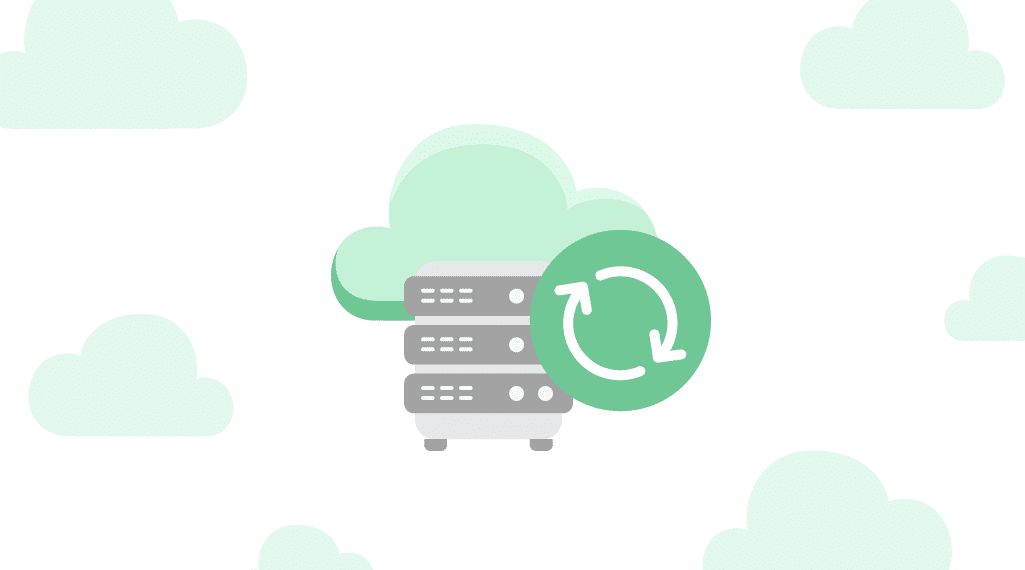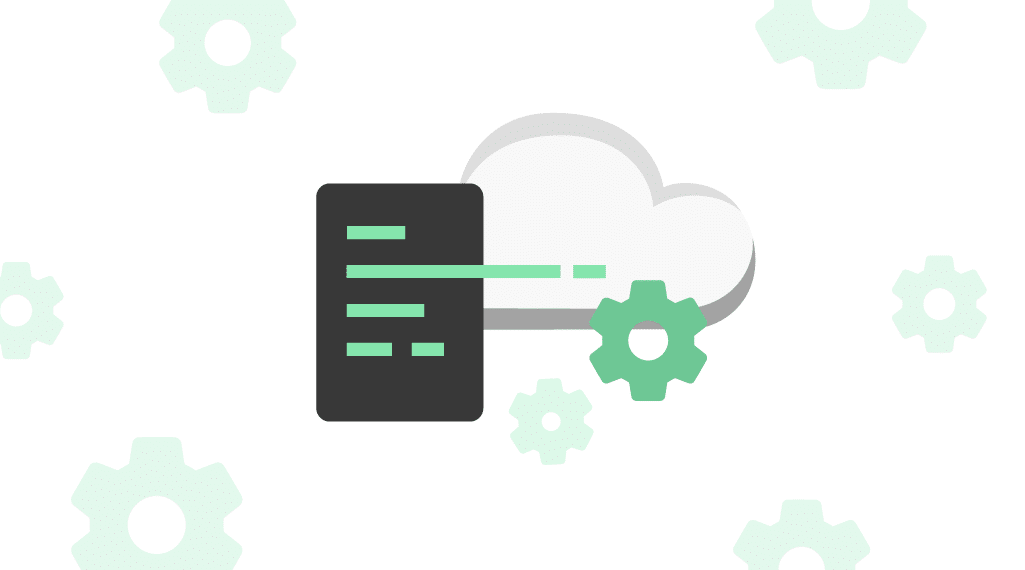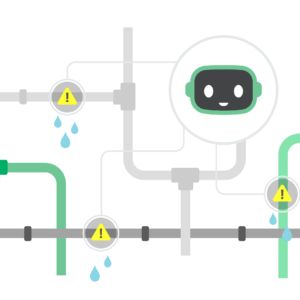Are you looking for ways to optimize your cloud operations and streamline your application development process? Discover the power of AWS Lambda services and how they can revolutionize your approach to serverless computing. In this article, we will explore the benefits of event-driven programming and delve into the core features of AWS Lambda, enabling you to maximize efficiency and propel your cloud operations to new heights.
Key Takeaways:
- Utilize AWS Lambda services to optimize your cloud operations.
- Discover the advantages of serverless computing and event-driven programming.
- Explore the core features of AWS Lambda and its role in serverless architectures.
- Learn practical strategies for optimizing AWS Lambda performance.
- Gain insights into real-world use cases and scenarios where AWS Lambda excels.
Understanding AWS Lambda and Serverless Computing
In this section, we will provide a comprehensive understanding of AWS Lambda and serverless computing. We will start by explaining the basics of AWS Lambda, including its core features and how it enables developers to run code without managing servers. We will also explore the evolution of cloud computing to serverless architectures, highlighting the benefits and differences compared to traditional computing models. By the end of this section, you will have a clear understanding of AWS Lambda’s role in serverless computing and its advantages over traditional approaches.
The Basics of AWS Lambda and Its Core Features
Let’s begin by diving into the foundation of AWS Lambda. AWS Lambda is a serverless computing service provided by Amazon Web Services (AWS). It allows you to run your code without the need for provisioning or managing servers. With AWS Lambda, you can focus solely on writing your application logic and let AWS handle the underlying infrastructure and scaling for you. This serverless approach frees you from server management tasks and enables you to build highly scalable and cost-effective applications.
One of the key features of AWS Lambda is its event-driven programming model. You can trigger your Lambda functions in response to various events, such as changes in data, API requests, or scheduled time intervals. This event-driven approach allows you to build highly responsive and flexible applications that can automatically react to changes in real-time.
Another core feature of AWS Lambda is automatic scaling. With traditional computing models, you would need to provision and manage servers to handle unpredictable spikes in traffic. However, with AWS Lambda, the service automatically scales your functions based on the incoming request volume. This means that you only pay for the actual execution time of your code and avoid the costs of idle resources.
Overall, AWS Lambda provides a powerful platform for building serverless applications. By leveraging its core features, you can focus on writing code, handle events as they happen, and let the service manage the scalability and infrastructure for you.
The Evolution of Cloud Computing to Serverless Architectures
Cloud computing has evolved significantly over the years. Traditionally, developers were responsible for managing servers, provisioning resources, and optimizing infrastructure to support their applications. This approach presented challenges in terms of scalability, cost-efficiency, and operational complexity.
However, the rise of serverless computing has revolutionized the way we build and deploy applications in the cloud. Serverless architectures, powered by AWS Lambda, have gained popularity due to their simplicity, scalability, and cost-effectiveness.
In serverless architectures, developers can focus on writing application code without the need to manage servers or worry about infrastructure scaling. AWS Lambda handles the infrastructure management, allowing developers to focus on their core business logic. This approach reduces the time and effort required for provisioning and managing servers, leading to faster development cycles and improved agility.
Additionally, serverless architectures offer automatic scaling based on the incoming workload. With AWS Lambda, your functions can scale up or down based on demand, ensuring optimal performance and cost savings. This scalability, combined with the pay-as-you-go pricing model, allows you to optimize costs by only paying for the actual usage of your functions.
Serverless architectures also enable event-driven programming, where your functions are triggered by events such as changes in data or user actions. This event-driven approach allows you to build responsive and flexible applications that can react to real-time changes in your environment. By leveraging AWS Lambda’s event-driven programming model, you can create highly adaptable and dynamic applications.
Comparing Traditional Computing Models and AWS Lambda’s Approach
When comparing traditional computing models to AWS Lambda’s serverless approach, there are several key differences to consider. In traditional computing models, developers are responsible for managing servers, provisioning resources, and optimizing infrastructure. This requires significant time and effort, and there is often a risk of overprovisioning or underprovisioning resources.
On the other hand, with AWS Lambda, all server management is abstracted away, and developers can focus solely on writing code. This eliminates the need for manual infrastructure management and reduces the complexity associated with traditional computing models. By leveraging AWS Lambda’s automatic scaling, your functions can handle any workload, ensuring optimal performance and cost-effectiveness.
In terms of cost, traditional computing models often require upfront investment in hardware and infrastructure, regardless of the actual usage. With AWS Lambda, you only pay for the time your code is running, resulting in cost savings and increased efficiency. This pay-as-you-go pricing model allows you to scale your applications without the need for substantial upfront investment.
Furthermore, AWS Lambda’s event-driven programming model provides a highly responsive and flexible approach to application development. Unlike traditional computing models where applications handle requests one at a time, AWS Lambda functions can be triggered by various events concurrently, allowing for parallel processing and faster response times.
In summary, AWS Lambda’s serverless approach offers significant advantages over traditional computing models, including simplified development, automatic scaling, cost-effectiveness, and event-driven programming.
| Traditional Computing Models | AWS Lambda’s Serverless Approach |
|---|---|
| Manual server management | No server management required |
| Upfront investment in hardware and infrastructure | Pay-as-you-go pricing model |
| Manual scaling and optimization | Automatic scaling based on demand |
| Sequential request handling | Concurrent event-driven processing |
Key Advantages of Using AWS Lambda for Your Applications
When it comes to developing applications, AWS Lambda offers a range of key advantages that can greatly enhance your development process. Let’s explore some of these benefits below:
- Automatic Scaling: One of the major advantages of AWS Lambda is its automatic scaling capability. With traditional computing models, you often need to provision and manage servers to handle fluctuating workloads. However, with AWS Lambda, you don’t have to worry about infrastructure capacity. Your code is automatically scaled up or down based on demand, ensuring optimal performance and efficiency. This allows you to focus on writing code and building application logic instead of dealing with the complexities of infrastructure management.
- Cost-Effective Pricing: Another significant advantage of AWS Lambda is its cost-effective pricing model. With AWS Lambda, you only pay for the actual execution time of your code. This means you don’t have to pay for idle resources, resulting in cost savings for your organization. Additionally, AWS Lambda offers a generous free tier, allowing you to experiment and prototype applications without incurring any costs. As your application scales, AWS Lambda’s pay-as-you-go pricing ensures that you only pay for what you use, making it a cost-efficient choice for your development needs.
- Infrastructure Management: AWS Lambda simplifies infrastructure management, freeing up your time and resources. As a serverless computing service, AWS Lambda abstracts away the underlying infrastructure, allowing you to focus on writing code and delivering value to your users. You no longer need to worry about provisioning, scaling, and monitoring servers. AWS Lambda takes care of all of that for you. This simplification of infrastructure management streamlines the development process, leading to faster time-to-market and improved overall efficiency.
By leveraging the automatic scaling, cost-effective pricing, and simplified infrastructure management offered by AWS Lambda, you can optimize your application development process and achieve scalability, cost-efficiency, and streamlined workflows. Whether you’re a small startup or a large enterprise, AWS Lambda’s advantages make it a powerful tool for enhancing your application development capabilities.
Strategies for Optimizing AWS Lambda Performance
In order to maximize the performance of your AWS Lambda applications, it is important to implement strategies for optimization. This section will explore key areas that you can focus on to improve the efficiency of your Lambda functions and enhance overall performance.
Tuning Memory and Computing Power for Better Performance
One crucial aspect of optimizing AWS Lambda performance is tuning the memory and computing power allocated to your functions. By carefully selecting the appropriate memory size for your functions, you can ensure that they have enough resources to execute efficiently without allocating excess memory. This can lead to better performance and more cost-effective execution.
Additionally, it is important to consider the computing power assigned to your Lambda functions. AWS Lambda supports multiple CPU cores, which allows for parallel processing and faster execution of your code. By correctly configuring the computing power, you can optimize performance and reduce execution time.
Leveraging Execution Environment Reuse
Another strategy for optimizing AWS Lambda performance is leveraging execution environment reuse. AWS Lambda provides a feature that allows the reuse of the execution environment for subsequent invocations of the same function. This means that any initialization logic or dependencies can be reused, reducing the overhead of repetitive setup tasks and improving overall performance.
By taking advantage of execution environment reuse, you can significantly reduce the cold start latency experienced when a function is invoked for the first time. This optimization technique can greatly enhance the performance of your Lambda functions, particularly for use cases with frequent invocations.
Best Practices for Code Storage and Management
To ensure the smooth operation and optimal performance of your Lambda functions, it is important to follow best practices for code storage and management. This includes properly structuring your code and organizing it into separate functions or modules for better maintainability.
In addition, you should leverage the use of version control systems, such as AWS CodeCommit or Git, to track changes to your code and manage different versions. This allows for easy rollback in case of issues and provides a clear history of code modifications.
Furthermore, consider using code deployment and management tools, such as AWS CodePipeline or AWS Serverless Application Model (SAM), to automate the deployment process and ensure consistent and efficient code deployments. By adhering to these best practices, you can optimize the management of your Lambda functions and improve their overall performance.
AWS Lambda Use Cases and Real-World Scenarios
In this section, we will explore real-world use cases and scenarios where AWS Lambda is commonly used. AWS Lambda offers a serverless computing solution that enables developers to focus on building applications without worrying about infrastructure management. Let’s dive into some of the innovative ways that organizations leverage AWS Lambda for their serverless applications.
Building Backend Services for Web and Mobile Applications
AWS Lambda is an ideal choice for building backend services for web and mobile applications. With its event-driven programming model, Lambda functions can be triggered by various events, such as API requests or file uploads, allowing developers to respond quickly to user actions. This flexibility makes AWS Lambda perfect for handling authentication, processing user data, and managing application logic in a scalable and cost-effective manner.
Data Processing and Transformation
AWS Lambda is widely used for data processing and transformation tasks. By leveraging Lambda’s ability to automatically scale based on incoming events, organizations can process large volumes of data in real-time or in batch. This makes it an excellent choice for tasks such as data validation, transformation, and enrichment. AWS Lambda also integrates seamlessly with other AWS services like Amazon S3, Amazon DynamoDB, and Amazon Kinesis, enabling organizations to build sophisticated data processing pipelines.
Event-Driven Automation
Another common use case for AWS Lambda is event-driven automation. Lambda functions can be triggered by events from various sources like file uploads, database changes, or scheduled events. This enables organizations to automate tasks such as generating reports, performing backups, and orchestrating workflows. By combining AWS Lambda with other AWS services, organizations can build powerful event-driven architectures that streamline their business processes and improve operational efficiency.
Monitoring, Metrics, and Best Practices for Lambda Functions
Monitoring and metrics are crucial for ensuring the reliability and performance of serverless applications built using AWS Lambda. It’s essential to have visibility into the execution of Lambda functions to identify bottlenecks, optimize resource allocation, and troubleshoot issues effectively. AWS provides tools like Amazon CloudWatch, AWS X-Ray, and AWS Lambda Insights to monitor Lambda functions and collect valuable insights. Best practices for Lambda functions include setting up appropriate alarms, logging relevant information, and properly configuring concurrency limits to ensure optimal performance and cost efficiency.
To summarize, AWS Lambda offers a range of use cases for building serverless applications, including backend services for web and mobile applications, data processing and transformation, and event-driven automation. By adopting best practices for monitoring and metrics, organizations can ensure the reliability and performance of their Lambda functions. The versatility and scalability of AWS Lambda make it a powerful tool for various industries and domains.
Advanced AWS Lambda Integrations and Automation Techniques
Enhancing Capability with Integration of Other AWS Services
In order to fully leverage the capabilities of AWS Lambda and enhance its functionality, integrating it with other AWS services is essential. By integrating AWS Lambda with services such as Amazon S3, Amazon DynamoDB, and API Gateway, you can create powerful and efficient serverless architectures. Let’s take a closer look at these integrations:
| AWS Service | Integration Advantage |
|---|---|
| Amazon S3 | Enables you to trigger lambda functions in response to object uploads, updates, and deletions in an S3 bucket, allowing you to process and analyze the data stored in S3. |
| Amazon DynamoDB | Allows you to use DynamoDB streams to trigger lambda functions in response to changes in your DynamoDB tables, enabling you to automate workflows and perform real-time data processing. |
| API Gateway | Enables you to create a RESTful API with API Gateway and trigger lambda functions as the backend for handling requests, providing a scalable and secure way to build serverless APIs. |
By integrating AWS Lambda with these services, you can unlock new capabilities and create a seamless flow of data and events in your serverless applications.
Streamlining Workflows Through Event-Driven Programming
Event-driven programming is a key concept in serverless architectures and plays a vital role in streamlining workflows. With AWS Lambda, you can build event-driven architectures that allow your functions to react and respond to events from various sources. By leveraging event-driven programming, you can create efficient and scalable architectures that automatically trigger Lambda functions in response to specific events.
Here are some examples of how you can use event-driven programming with AWS Lambda:
- Triggering Lambda functions in response to changes in a database, such as DynamoDB.
- Processing events generated by other AWS services, like S3 or Kinesis.
- Reacting to messages from a message queue, such as Amazon Simple Queue Service (SQS).
By utilizing event-driven programming with AWS Lambda, you can build dynamic and responsive applications that scale seamlessly with the demands of your workload.
Ensuring Security in Serverless Applications with Lambda
Security is of utmost importance when developing serverless applications. With AWS Lambda, you can implement robust security measures to protect your applications and data. Here are some key security considerations for serverless applications:
- Implementing appropriate access controls and permissions within AWS Identity and Access Management (IAM) to ensure that only authorized users can invoke your Lambda functions.
- Encrypting sensitive data at rest and in transit using services like AWS Key Management Service (KMS) or AWS Certificate Manager (ACM).
- Applying best practices for securing your code and dependencies, such as utilizing AWS Secrets Manager for storing sensitive configuration data.
- Implementing logging and monitoring mechanisms to detect and respond to any security incidents.
By addressing these security considerations, you can ensure the integrity and confidentiality of your serverless applications and mitigate potential risks.
Conclusion
In conclusion, AWS Lambda services play a crucial role in maximizing efficiency and optimizing cloud operations. By embracing serverless computing and leveraging the power of AWS Lambda, you can transform your application development process and unlock a multitude of benefits.
With AWS Lambda, you can achieve scalability, as your code automatically scales up or down based on demand, ensuring optimal performance and resource utilization. This flexibility enables you to handle sudden spikes in traffic without worrying about provisioning or managing servers. Moreover, AWS Lambda’s cost-effectiveness is unparalleled, as you only pay for the actual execution time of your code. This pay-as-you-go pricing model allows you to optimize costs and allocate resources efficiently.
By adopting AWS Lambda, you also streamline your workflows and simplify infrastructure management. With Lambda, you can focus on writing code and building application logic, while AWS takes care of provisioning, monitoring, and scaling. This enables faster development cycles and empowers your team to deliver high-quality applications while reducing time-to-market.
In summary, AWS Lambda empowers you to build efficient, scalable, and cost-effective applications. By harnessing the power of serverless computing and integrating AWS Lambda services into your workflows, you can optimize your cloud operations and drive business success.
Ready to Elevate Your Cloud Operations with AWS Lambda?
Transform your application development and operational efficiency by integrating AWS Lambda into your cloud strategy. Schedule a consultation with our AWS experts today and unlock the full potential of serverless computing tailored to your business needs.
🔗 Schedule your Consultation Now
AWS Lambda is a serverless computing service provided by Amazon Web Services. It allows you to run code without the need to manage servers or infrastructure. The core features of AWS Lambda include automatic scaling, pay-as-you-go pricing, event-driven programming, and seamless integration with other AWS services. In serverless computing, you do not have to manage servers or worry about infrastructure. Instead, you can focus solely on writing code and building application logic while the underlying infrastructure is managed for you. AWS Lambda offers automatic scaling, allowing your code to handle any amount of traffic or workload. It also provides a cost-effective pricing model where you only pay for the actual execution time of your code. Additionally, AWS Lambda simplifies infrastructure management, freeing up more time for writing code. You can optimize AWS Lambda performance by tuning memory and computing power, leveraging execution environment reuse, and following best practices for code storage and management.FAQ
What is AWS Lambda?
What are the core features of AWS Lambda?
How does serverless computing differ from traditional computing models?
What are the advantages of using AWS Lambda for my applications?
How can I optimize the performance of my AWS Lambda functions?













